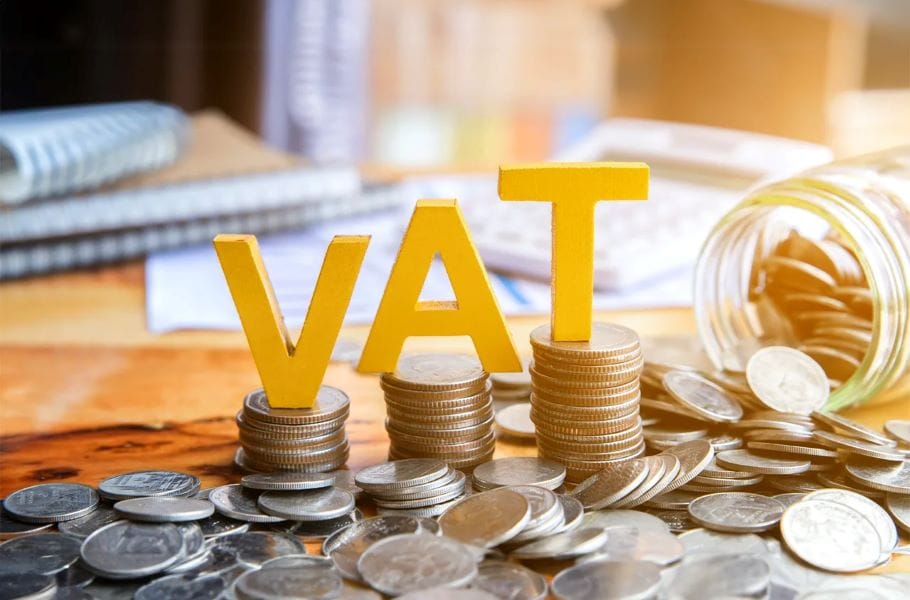VAT (Value-Added Tax) is a tax levied on the value-added part of goods and services, and is widely used in the field of international and domestic cargo transportation. This article will analyze the VAT-related knowledge in the transportation industry in detail to help companies effectively understand tax obligations and optimize tax management.
You may also be interested in: The 11 Common International Trade Terms

Overview of VAT
VAT is a turnover tax levied on the value-added amount generated by goods or services during the circulation process. Each level only taxes the value-added part it provides, rather than the full amount of goods and services, thereby avoiding double taxation and achieving fairness and efficiency in taxation. It is mainly applicable to companies that provide transportation services, covering international and domestic cargo transportation, logistics and related services.
VAT Rate for Shipping Services
The VAT rate for transportation services varies in tax laws in different countries and regions, and is generally divided into three types:
- Standard rate: In most countries, the VAT for transportation services is subject to the standard rate.
- Preferential rate: Some countries provide preferential rates for specific transportation services, especially for public transportation or specific cargo transportation services.
- Zero tax rate: International transportation (cross-border transportation) often applies a zero tax rate, that is, the transportation of goods itself is not subject to VAT, and the tax burden is borne by the importer.
Different VAT Regulations in Different Countries
There are significant differences in value-added tax (VAT) policies for freight services across the world
- EU: EU countries impose VAT on imports, and shipping costs are included in the tax base. In addition, the EU has also launched the IOSS system to simplify the VAT processing of cross-border small parcels. For example, the German VAT rate is 19% and the French VAT rate is 20%.
- United Kingdom: The United Kingdom has formulated an independent VAT policy since Brexit. The standard VAT rate is 20%, and freight is still a taxable part.
- Australia and New Zealand: In these countries, imported goods also include VAT, and shipping costs are also taxable.
- Saudi Arabia, the United Arab Emirates and other Gulf countries: a standard VAT rate of 5% applies to domestic transportation services
- USA: Regarding VAT, most states do not impose VAT on imported goods. The United States is one of the few countries that does not impose VAT on goods, but it has different regulations on consumption tax on goods.
How to Calculate Freight VAT?
When calculating freight VAT, the following factors are mainly considered:
- Goods value: The basis for VAT calculation is usually the declared value of the goods, which is the basis for customs assessment.
- Freight: Most countries stipulate that freight should be included in the tax base. For example, when transporting goods from China to EU countries, the freight amount will be included in the VAT calculation base.
- VAT rate: The VAT rate varies from country to country. The VAT rate in EU countries is generally between 15% and 27%, and the tax rate in some regions is higher.
Calculation formula: VAT amount = (goods value + freight) × VAT rate
Learn more: Customs Clearance and Fees

Impact of VAT on the Shipping Industry
Impact of VAT in cost structure
Fuel, port services, equipment procurement, etc. all include VAT, which directly increases costs. The capital occupation of VAT puts pressure on corporate liquidity.
Impact of VAT in pricing
VAT costs are mostly borne by customers and are directly reflected in service pricing. VAT differences may lead to higher service prices in some regions, affecting market competitiveness.
Challenges to tax management
It is necessary to deal with differences in tax laws in multiple countries, increasing compliance costs and difficulties.
Impact on the international shipping market
The zero-tax policy reduces international transportation costs and increases market attractiveness. Tax rate differences may cause uneven regional competition.
How to Reduce Freight VAT Costs
Choose the right mode of transport: According to the nature of the goods and transportation needs, choosing a more economical mode of transport can effectively reduce freight costs, thereby reducing the total VAT.
Import in batches: If the volume of goods is large, you can consider importing in batches to reduce VAT while not exceeding the tax-free amount.
Use a dedicated tax agent or freight forwarding company. Ubest Shipping has extensive experience in international transportation and can help customers optimize logistics solutions, ensure reasonable VAT declarations, and avoid unnecessary tax costs.
VAT is an important part of the cost and an important factor in pricing in the shipping industry. Shipping companies need to reduce the negative impact of VAT on operating costs through optimization measures while meeting tax compliance requirements.
